Abstract
It is well known that fire is a common driver in many biomes and it plays a vital role in maintaining ecosystem functioning in many South African biomes. This ecosystem process is an important determinant of plant community composition and diversity, and can result in changes in structural composition and ecosystem functioning. The main objectives of this study are to determine the influence of fire on grass species richness, diversity and composition in Mountain Zebra National Park. Using satellite imagery, the park’s fire history was determined between 2000 and 2020. Eighty plots (approximately 20 m × 20 m; >100 m apart) were laid out purposively across different fire regimes. There was no significant difference in both species richness and diversity in burned and unburned sites. However, there was a difference in species composition between burned and unburned sites and between different fire frequencies. The unburned site had higher moribund material and unpalatable grasses compared to the burned area.
Conservation implications: The results of this study will help in the completion of the fire management plan for the park which will enable conservation managers to make better decisions with regard to fire management in mountainous grassland at Mountain Zebra National Park. Consequently, this will lead to improved veld condition and vegetation structure.
Keywords: fire; grassland; species richness; species; diversity species; composition-palatability; ecosystem functioning; grass percentage cover.
Introduction
Fire plays a fundamental role in maintaining ecosystem functioning in many South African vegetation types (Bond & Keeley 2005). It is a common and regular driver of change in many ecosystems and biomes across the globe, from boreal forests to tropical grasslands. Fire influences species composition, vegetation structure and dynamics (Bond & Van Wilgen 1996), particularly in grassland and savanna systems. In grassland and savanna biomes, fire frequency, extent and intensity can be a major determinant factor in the abundance of woody and herbaceous species (Bond, Woodward & Midgley 2005; Cavender-Bares & Reich 2012). Fire can be used as a management tool in order to promote ecosystem benefits.
Grasslands are the most primitive evolving systems of diverse plant communities (Little, Hockey & Jansen 2015). South African grasslands are being increasingly degraded through the increasing influence of overgrazing (Neke & Du Plessis 2004; O’Connor 1985), extensive and frequent burning (Uys, Bond & Everson 2004), plantation forestry (Lipsey & Hockey 2010) and invasion by alien plant species (Le Maitre et al. 1996). It is estimated that 60% of the grassland biome has been permanently transformed, while as little as 15% remains as natural grassland with only 2% formally conserved in South Africa (Carbutt et al. 2011; Macdonald 1989). What is alarming is that the majority of the natural grassland is vastly fragmented and most are ill-managed (Mucina & Rutherford 2006).
Mountain Zebra National Park (MZNP) is a unique conservation area occurring at the interface of three biomes, that is, grassland, Nama Karoo and thicket. Fire has recently become more common in the Nama Karoo and other arid ecosystems, potentially threatening the persistence of native species (Du Toit, O’Connor & Van den Berg 2015; Syphard, Keeley & Abatzoglou 2017). Climate change may be the reason why there is an increase in fire-conducive weather conditions (Kraaij, Cowling & Van Wilgen 2012; Wilson et al. 2010), changes in the structural composition of vegetation affecting fuel attributes of ecosystems (D’Antonio & Vitousek 1992; Syphard et al. 2017). Just like other grassland vegetation types, MZNP mountainous grassland is prone to occasional lightning-caused fires (Bezuidenhou & Brown 2016). Studies from the eastern Karoo suggest that fire can significantly modify vegetation structure and composition, to a similar degree as grazing and herbivory (Du Toit et al. 2015). The complexity of the interaction between grazing, herbivory and climate in the region has been broadly acknowledged (Kraaij & Milton 2006). Fire plays a huge role in shaping the structure and composition of the vegetation (Veen et al. 2008). It provides a green flush of nutrient-rich grass by removing moribund grass materials (Bond & Van Wilgen 1996). Although South African grassland systems are naturally maintained by winter and spring fires (Mucina & Rutherford 2006), there is concern over the possible detrimental effect of unnaturally frequent fires on plant diversity (Collins & Calabrese 2012). It has been suggested that controlled burning should be based on the rate of litter accumulation and that grazing should not start until sward height reaches 250 mm (Mentis 1981). Some of the palatable grass species require frequent burning, for example, Themeda triandra, and in the absence of fire, species such as Merxmuellera disticha and Merxmuellera stricta increase (Owen-Smith & Danckwerts 1997). Although there are studies carried out on grassland ecology in South Africa, limited studies exist in MZNP mountainous grassland which to some extent hinder the development of a suitable fire management plan for the park. Hence, this study aims to determine the influence of fire on: (1) grass species richness and diversity and (2) grass relative abundance cover. We hypothesise that: (1) burned sites will have high species richness and species diversity because of fire reducing moribund and making it easier for plants to get sunlight and other nutrients, and (2) burned sites will have more palatable grass compared to unburned sites because fire encourages the growth of palatable grasses.
Research methods and design
Setting
The study was conducted in MZNP (Figure 1) which is approximately 28 412 ha and located in the Eastern Cape Province, South Africa (32° 22′ 47″S; 25° 47′ 88″E) (Bezuidenhout & Brown 2008). Mountain Zebra National Park was proclaimed in 1937 protecting a remnant population of the Cape mountain zebra (Equus zebra zebra) and has since played a principal role in the conservation of the biodiversity of the area (Grobler 1983). The park is characterised by elements of three biomes of South Africa, which are Eastern Cape Escarpment Thicket, Eastern Upper Karoo and Karoo Escarpment Grassland (53%) (Gaylard et al. 2006). The park is one of the few protected areas that protect and preserve this vegetation (Bezuidenhout & Brown 2008). It is classified as Nama Karoo but falls in in-between arid Nama Karoo bushveld in the west and the drier grassland in the east (Gebeyehu & Samways 2002). The biome is characterised by grasses and dwarf shrubs (Mucina et al. 2006). The park is located on the northern slopes of the Bankberg mountain range in the Cape Midlands, Eastern Cape, which is described as having a cool and arid climate (Bezuidenhout & Brown 2008). It is dominated by sedimentary rock types such as sandstones, siltstones and mudstones of the Beaufort Series. Post-Karoo dolerite intrusions are also prevailing in certain areas. The soil throughout the park is generally shallow with vast parts of the park rocky with very little to no soil topsoil (Brown & Bezuidenhout 2000). The average monthly temperatures in summer (September to March) vary between a minimum of 6°C and a maximum of 28°C, whereas in winter (April to August) the temperature often drops below 0°C and reaches a maximum of 20°C (Novellie & Gaylard 2013). Rain falls mostly in late summer and autumn (December to April) (Novellie & Gaylard 2013) and the average annual rainfall is 400 mm (Pond et al. 2002). The sites were actively grazed by the ungulates in MZNP, for example, Cape mountain zebra, red hartebeest, wildebeest, etc.
 |
FIGURE 1: Location of the study sites within Mountain Zebra National Park. |
|
Field data collection
Eighty plots were laid out across the sites using purposive sampling (20 per fire regime) with 20 plots in a site which burned in 2002 and 2010 and 20 in the unburned (control) site which is Site A. Another 20 plots were done in a site which burned in 2010 and 2019 with 20 plots on an unburned (control) site which is site B (Figure 2). Each plot was approximately 20 m × 20 m (~0.04 ha) and spaced at least 100 m apart. In each plot, all grasses were counted and identified to species level. The study was done during the growing season, which is from December to April, in the area for easy identification of the grass. Field identification of the grass was done during December and January. Each species was assigned with a cover percentage value using the Daubenmire cover class method while overall grass and shrub percentages were also estimated in each plot (Daubenmire 1959).
 |
FIGURE 2: Fire scar maps showing the location of fires in Mountain Zebra National Park between 2000 and 2020. |
|
Fire frequency data
Historical fire data for the period 2000 until 2020 were obtained from the Moderate Resolution Imaging Spectroradiometer (MODIS) MCD45 burned area product and Sentinel-1. The 2019 fire scar was obtained by physically mapping the fire scar on the ground. The fire data were then processed using quantum geographic information system (QGIS) to generate fire scar maps for the study sites. All the fires that occurred from 2000 to 2020 were in one vegetation type, that is, mountain grassland. A total of four fires have occurred in the park, that is, in 2002, 2010, 2016 and 2019. The fire that had occurred in 2016 was not used in the data because it was too small (<10 ha). There are two fire scars that will be used in this study, that is, Site A (2002 and 2010) and Site B (2010 and 2019) fire scars.
Statistical analysis
The statistical analyses were performed using R where two response variables were investigated (R Development Core Team 2011). These include species richness and normalised Shannon diversity index (NSDI). Species richness is calculated as absolute counts of the number of unique species at the corresponding vegetation units. On the other hand, NSDI is implemented as an extension of the original proposal by Shannon (1948). It is a fractional value that varies between 0 and 1. Indices closer to 1 imply a high degree of unevenness. The p-values reported in this study are adjusted for multiple testing using the Benjamini–Hochberg technique (Benjamini & Hochberg 1995). This helps minimise the risk of incorrectly rejecting the null hypotheses verified with the statistical tests.
Ethical considerations
This article does not contain any studies involving animals and/or human participants performed by any of the authors.
Results
Species richness and species diversity
Overall species richness was high in burned compared to unburned areas, but not significant (p > 0.05, Figure 3). There is no significant difference in grass species richness between burned and unburned sites for both Site A and Site B (p > 0.05, Figure 4).
 |
FIGURE 3: Mean differences in grass species richness between the burned and unburned sites. |
|
 |
FIGURE 4: Mean differences in grass species richness between the two different fire occurrences in Site A and Site B. |
|
There were differences in species diversity between burned and unburned sites with high species diversity in burned sites compared to unburned sites (Figure 5). However, the difference was not statistically significant (p > 0.05). There was no difference in species diversity in both Site A and Site B burned and unburned sites (Figure 6).
 |
FIGURE 5: Mean differences in grass species diversity between the burned and unburned sites. |
|
 |
FIGURE 6: Mean differences in grass species diversity between burned and unburned areas in Site A and Site B. |
|
Percentage cover
Grass covers were different in burned and unburned sites for both Site A and Site B (Figure 7). While not statistically significant (p > 0.05), there was greater grass percentage cover in burned areas in Site A, while in Site B, grass percentage cover was high in unburned sites versus the burned sites. However, there was no significant difference between the different fire frequencies in terms of grass and shrubs species composition (p > 0.05). Grass percentage composition was not statistically different when comparing Site A (2002 and 2010) and Site B (2010 and 2019) (p > 0.05).
 |
FIGURE 7: Grass percentage cover for both fire frequencies in burned and unburned sites. |
|
Species composition
Overall species composition of the burned and unburned areas was significantly different (p < 0.05). Species composition varied in both fire frequencies (Site A and Site B) burned sites compared to unburned sites and the difference is statistically significant (p = 0.00). The results suggest that the absence of fire reduces or encourages certain species over others. For example, in Site A (2002 and 2010), there is a greater prevalence of T. triandra in the burned sites followed by Cymbopogon pospischili, which is similar in burned and unburned sites, and M. disticha and M. stricta in unburned sites (Figure 8). Site B also had a high percentage of T. triandra in burned sites compared to unburned sites followed by Heteropogon contortus, which are both highly palatable species, and M. disticha and M. stricta species composition was higher in unburned sites (Figure 9). The results from both fire frequencies show the highly palatable grass species, T. triandra, to be high in burned sites compared to unburned sites while unburned sites were dominated by M. disticha and M. stricta which is an unpalatable wiry grass that forms moribund in the absence of fire.
 |
FIGURE 8: Species composition of the grass in burned and unburned sites. |
|
 |
FIGURE 9: Species composition of the grass in burned and unburned sites. |
|
Discussion
Even though fire is known to cause replacement or addition in a habitat which results in both species richness and species diversity, there was no significant difference in terms of species richness and species diversity. There was no significant difference in species richness and diversity in burned and unburned areas in this study. This is similar to a study done by Nepolo and Mapaure (2012) where there was no significant difference in burned and unburned sites species richness in semi-arid savanna woodlands in Namibia.
The results have shown the importance of fire in grassland ecosystems as an ecological factor that determines the plant species composition (Bond & Van Wilgen 1996). The grass with high moribund such as M. disticha and M. stricta were dominant in unburned (control) sites for both Site A (2002 and 2010) and Site B (2010 and 2019). The presence of M. disticha and M. stricta is a strong signal of habitat degradation or disturbance, as these two species are associated with moribund material which inhibits the growth of other species (Owen-Smith & Danckwerts 1997). These are big tussock, wiry grasses that easily outcompete other grasses under conditions of selective grazing and the absence of fire. With fire suppression, these grasses create a huge amount of moribund which limits sunlight and other resources for other plant species. One of the highly palatable grasses, that is, T. triandra, was high in burned sites compared to unburned sites in both fire frequencies. The absence of fire seems to suppress the palatable grass and promotes grass that does well under shady conditions. Themeda triandra is one of the most significant grasses in MZNP as it is the most palatable grass available for grazing animals (Zacharias 1990). Consequently, the grasslands dominated by T. triandra are of significant ecological importance at MZNP. Themeda triandra is considered to be a climax or subclimax species (Smit, Bredenkamp & Van Rooyen 1992) and an indicator of grassland in good condition and it declines in abundance when overgrazed, underutilised or in the absence of fire (also commonly referred to as a ‘Decreaser’ species) (Van der Westhuizen et al. 2001; Wiegand et al. 2004). In South Africa, Australia and Southeast Asia, T. triandra dominate mainly in frequently burnt grasslands and their populations may decline to local extinction if fires are excluded for longer than a decade (Snyman, Ingram & Kirkman 2013). This is similar to this study as T. triandra was low in terms of composition in unburned areas. Manipulation of the fire interval is a key tool for influencing the biodiversity of vegetation stands (Bond & Keeley 2005). Grass and shrubs species composition was found to differ significantly between burned and unburned areas.
The overall grass cover differed between burned and unburned sites; however, the difference was not statistically significant. Grass cover was noted to be higher in the burned area in comparison to an unburned area in the 2002 and 2010 fires (Site A). Fire occurrence removes the moribund and the litter build up on the soil surface and this changes the microclimate and nutrient levels in the surface soil (Lavorel, McIntyre & Grigulis 1999). Therefore, the removal of these growth inhibitors by fire in the burned area has resulted in higher grass cover observed for this site. According to a study carried out by Snyman (2003), it was conveyed that fire increases plant nutrient availability in the soil and acts as a natural selective force in the development of grass species. Fires play an important role in driving species composition in MZNP.
Conclusion
Although there was no significant difference in grass species richness and species diversity in burned and unburned sites, there was a significant difference in grass species composition in burned and unburned sites species composition. One of the limitations of this study is the absence of prior data collected on the sites before the 2002 fire which was going to bring a good comparison. Fire plays an important role in species composition; hence, there was a significant difference in Site B where the fire burned less than 3 years ago and no significant difference in Site A where the fire has burned more than 10 years ago. This does show that the fire return interval should not be more than 10 years as it affects grass species composition and a site that burned more than 10 years ago is almost similar to a site that has not burned in 20 years or more. One of the highly palatable grass T. triandra was low in unburned sites compared to burned sites, and a decline in abundance of T. triandra in grassland is usually coupled with a decline in grazing value, species richness and cover. Consequently, we recommend intermittent fire application lesser than 10 years as it could increase the abundance of palatable species. This is done to maintain healthy functional grassland composition. If any natural fire occurs in a veld that has not burned in more than 8 years, then they must not suppress it, unless there is a threat to property or lives.
Acknowledgements
The authors are grateful to Masindi Tina Raselabe for his assistance with all the field data collection during the study.
Competing interests
The authors declare that they have no financial or personal relationships that may have inappropriately influenced them in writing this article
Authors’ contributions
N.M. contributed to the data collection, analysis and writing of the article. A.R. and S.A. supervised the study and participated in the editing or reviewing of the drafts. H.B. supervised the study and reviewed the manuscript.
Funding information
This study was supported by the JRS Biodiversity Foundation, Washington, DC.
Data availability
The data are available from the corresponding author upon reasonable request.
Disclaimer
The views and opinions expressed in this article are those of the authors and do not necessarily reflect the official policy or position of any affiliated agency of the authors.
References
Benjamini, Y. & Hochberg, Y., 1995, ‘Controlling the false discovery rate: A practical and powerful approach to multiple testing’, Journal of the Royal Statistical Society: Series B (Methodological) 57(1), 289–300. https://doi.org/10.1111/j.2517-6161.1995.tb02031.x
Bezuidenhout, H. & Brown, L.R., 2016, ‘Vegetation description of the Doornhoek section of the Mountain Zebra National Park (MZNP), South Africa’, Koedoe 50(1), 82–92. https://doi.org/10.4102/koedoe.v50i1.142
Bezuidenhout H., Novellie P., Brown L. & Taplin M., 2016, Fire Management Plan For Mountain Zebra National Park, South African National Parks.
Bond, W.J. & Keeley, J.E., 2005, ‘Fire as a global “herbivore”: The ecology and evolution of flammable ecosystems’, Trends in Ecology & Evolution 20(7), 387–394. https://doi.org/10.1016/j.tree.2005.04.025
Bond, W.J. & Van Wilgen, B.W., 1996, ‘Surviving fires – Vegetative and reproductive responses’, in W.J. Bond & B.W. van Wilgen (eds.), Fire and plants, pp. 34–51, Springer, Dordrecht.
Bond, W.J., Woodward, F.I. & Midgley, G.F., 2005, ‘The global distribution of ecosystems in a world without fire’, New Phytologist 165(2), 525–538. https://doi.org/10.1111/j.1469-8137.2004.01252.x
Brown, L.R. & Bezuidenhout, H., 2000, ‘The phytosociology of the De Rust section of the Mountain Zebra National Park, Eastern Cape’, KOEDOE 43(1), 1–18. https://doi.org/10.4102/koedoe.v43i1.204
Carbutt, C., Tau, M., Stephens, A. & Escott, B., 2011, ‘The conservation status of temperate grasslands in southern Africa’, Grassroots 11, 17–23.
Cavender-Bares, J. & Reich, P.B., 2012, ‘Shocks to the system: Community assembly of the oak savanna in a 40-year fire frequency experiment’, Ecology 93(sp8), S52–S69. https://doi.org/10.1890/11-0502.1
Collins, S.L. & Calabrese, L.B., 2012, ‘Effects of fire, grazing and topographic variation on vegetation structure in tallgrass prairie’, Journal of Vegetation Science 23(3), 563–575. https://doi.org/10.1111/j.1654-1103.2011.01369.x
D’Antonio, C.M. & Vitousek, P.M., 1992, ‘Biological invasions by exotic grasses, the grass/fire cycle, and global change’, Annual Review of Ecology and Systematics 23, 63–87. https://doi.org/10.1146/annurev.es.23.110192.000431
Daubenmire, R.F., 1959, ‘A canopy-coverage method of vegetational analysis’, Northwest Science 33(1), 43–64.
Du Toit, J.C.O., O’Connor, T.G. & Van den Berg, L., 2015, ‘Photographic evidence of fire-induced shifts from dwarf-shrub-to grass-dominated vegetation in Nama-Karoo’, South African Journal of Botany 101, 148–152. https://doi.org/10.1016/j.sajb.2015.06.002
Gaylard, A., Mjadu, M., De Klerk, J., Spies, A., Mathumba, W., Holness, S. et al., 2006, Mountain Zebra National Park: Park management plan, South African National Parks, Cradock.
Gebeyehu, S. & Samways, M.J., 2002, ‘Grasshopper assemblage response to a restored national park (Mountain Zebra National Park, South Africa)’, Biodiversity & Conservation 11, 283–304. https://doi.org/10.1023/A:1014514007744
Grobler, J.H., 1983, ‘Feeding habits of the Cape Mountain Zebra Equus zebra zebra LINN. 1758’, Koedoe 26(1), 159–168. https://doi.org/10.4102/koedoe.v26i1.596
Kraaij, T., Cowling, R.M. & Van Wilgen, B.W., 2012, ‘Lightning and fire weather in eastern coastal fynbos shrublands: Seasonality and long-term trends’, International Journal of Wildland Fire 22(3), 288–295. https://doi.org/10.1071/WF11167
Kraaij, T. & Milton, S.J., 2006, ‘Vegetation changes (1995–2004) in semi-arid Karoo shrubland, South Africa: Effects of rainfall, wild herbivores and change in land use’, Journal of Arid Environments 64(1), 174–192. https://doi.org/10.1016/j.jaridenv.2005.04.009
Lavorel, S., McIntyre, S. & Grigulis, K., 1999, ‘Plant response to disturbance in a Mediterranean grassland: How many functional groups?’, Journal of Vegetation Science 10(5), 661–672. https://doi.org/10.2307/3237081
Le Maitre, D.C., Van Wilgen, B.W., Chapman, R.A. & McKelly, D.H., 1996, ‘Invasive plants and water resources in the Western Cape Province, South Africa: Modelling the consequences of a lack of management’, Journal of Applied Ecology 33(1), 161–172. https://doi.org/10.2307/2405025
Lipsey, M.K. & Hockey, P.A., 2010, ‘Do ecological networks in South African commercial forests benefit grassland birds? A case study of a pine plantation in KwaZulu-Natal’, Agriculture, Ecosystems & Environment 137(1–2), 133–142. https://doi.org/10.1016/j.agee.2010.01.013
Little, I.T., Hockey, P.A. & Jansen, R., 2015, ‘Impacts of fire and grazing management on South Africa’s moist highland grasslands: A case study of the Steenkampsberg Plateau, Mpumalanga, South Africa’, Bothalia-African Biodiversity & Conservation 45(1), 1–15. https://doi.org/10.4102/abc.v45i1.1786
Macdonald, I.A.W., 1989, ‘Man’s role in changing the face of southern Africa’, in B.J. Huntley (ed.), Biotic diversity in Southern Africa: Concepts and conservation, pp. 51–78, Oxford University Press, Cape Town.
Mentis, M.T., 1981, ‘Evaluation of the wheel-point and step-point methods of veld condition assessment’, Proceedings of the Annual Congresses of the Grassland Society of Southern Africa 16(1), 89–94. https://doi.org/10.1080/00725560.1981.9648927
Mucina, L., Rutherford, M.C., Palmer, A.R., Milton, S.J., Scott, L., Lloyd, J.W. et al., 2006, ‘Nama-karoo biome. The vegetation of South Africa, Lesotho and Swaziland’, Strelitzia 19, 324–347.
Neke, K.S. & Du Plessis, M.A., 2004, ‘The threat of transformation: Quantifying the vulnerability of grasslands in South Africa’, Conservation Biology 18, 466–477.
Nepolo, E., & Mapaure, I., 2012, ‘Short-term influence of fire on herbaceous composition, diversity and grass biomass production in semi-arid savanna woodland in Windhoek. Namibia’, International Journal of Ecosystem 2(6), 154–160.
Novellie, P. & Gaylard, A., 2013, ‘Long-term stability of grazing lawns in a small protected area, the Mountain Zebra National Park’, Koedoe: African Protected Area Conservation and Science 55(1), 1–7. https://doi.org/10.4102/koedoe.v55i1.1108
O’Connor, T.G., 1985, Synthesis of field experiments concerning the grass layer in the savanna regions of southern Africa, National Scientific Programmes Unit: CSIR, SANSP Report 114, p. 133.
Owen-Smith, N. & Danckwerts, J.E., 1997, ‘Herbivory’, in R.M. Cowling, D.M. Richardson & S.M. Pierce (eds.), Vegetation of Southern Africa, pp. 397–420, Cambridge University Press, Cambridge.
Pond, U., Beesley, B.B., Brown, L.R. & Bezuidenhout, H., 2002, ‘Floristic analysis of the Mountain Zebra National Park, Eastern Cape’, Koedoe 45(1), 35–58. https://doi.org/10.4102/koedoe.v45i1.18
R Development Core Team, 2011, R: A language and environment for statistical computing, R Foundation for Statistical Computing, Vienna, viewed n.d., from http://www.R-project.org.
Shannon, C.E., 1948, ‘The mathematical theory of communication’, The Bell System Technical Journal 27(1), 379–423.
Smit, C.M., Bredenkamp, G.J. & Van Rooyen, N., 1992, ‘Phytosociology of the B land type in the Newcastle–Memel–Chelmsford Dam area’, South African Journal of Botany 58(5), 363–373. https://doi.org/10.1016/S0254-6299(16)30823-7
Snyman, H.A., 2003, ‘Short-term response of rangeland following an unplanned fire in terms of soil characteristics in a semi-arid climate of South Africa’, Journal of Arid Environments 55(1), 160–180. https://doi.org/10.1016/S0140-1963(02)00252-5
Snyman, H.A., Ingram, L.J. & Kirkman, K.P., 2013, ‘Themeda triandra: A keystone grass species’, African Journal of Range & Forage Science 30(3), 99–125. https://doi.org/10.2989/10220119.2013.831375
Syphard, A.D., Keeley, J.E. & Abatzoglou, J.T., 2017, ‘Trends and drivers of fire activity vary across California arid land ecosystems’, Journal of Arid Environments 144, 110–122. https://doi.org/10.1016/j.jaridenv.2017.03.017
Uys, R.G., Bond, W.J. & Everson, T.M., 2004, ‘The effect of different fire regimes on plant diversity in southern African grasslands’, Biological Conservation 118(4), 489–499. https://doi.org/10.1016/j.biocon.2003.09.024
Van der Westhuizen, H.C., Snyman, H.A., Van Rensburg, W.L.J. & Potgieter, J.H.J., 2001, ‘The quantification of grazing capacity from grazing – And production values for forage species in semi-arid grasslands of southern Africa’, African Journal of Range and Forage Science 18(1), 43–52. https://doi.org/10.2989/10220110109485754
Veen, G.F., Blair, J.M., Smith, M.D. & Collins, S.L., 2008, ‘Influence of grazing and fire frequency on small-scale plant community structure and resource variability in native tallgrass prairie’, Oikos 117(6), 859–866. https://doi.org/10.1111/j.0030-1299.2008.16515.x
Wiegand, T., Snyman, H.A., Kellner, K. & Paruelo, J.M., 2004, ‘Do grasslands have a memory: Modelling phytomass production of a semiarid South African grassland’, Ecosystems 7, 243–258. https://doi.org/10.1007/s10021-003-0235-8
Wilson, A.M., Latimer, A.M., Silander, Jr. J.A., Gelfand, A.E. & De Klerk, H., 2010, ‘A hierarchical Bayesian model of wildfire in a Mediterranean biodiversity hotspot: Implications of weather variability and global circulation’, Ecological Modelling 221(1), 106–112. https://doi.org/10.1016/j.ecolmodel.2009.09.016
Zacharias, P.J.K., 1990, Acocks’ notes: Key grasses of South Africa, Grassland Society of South Africa, Howick.
|